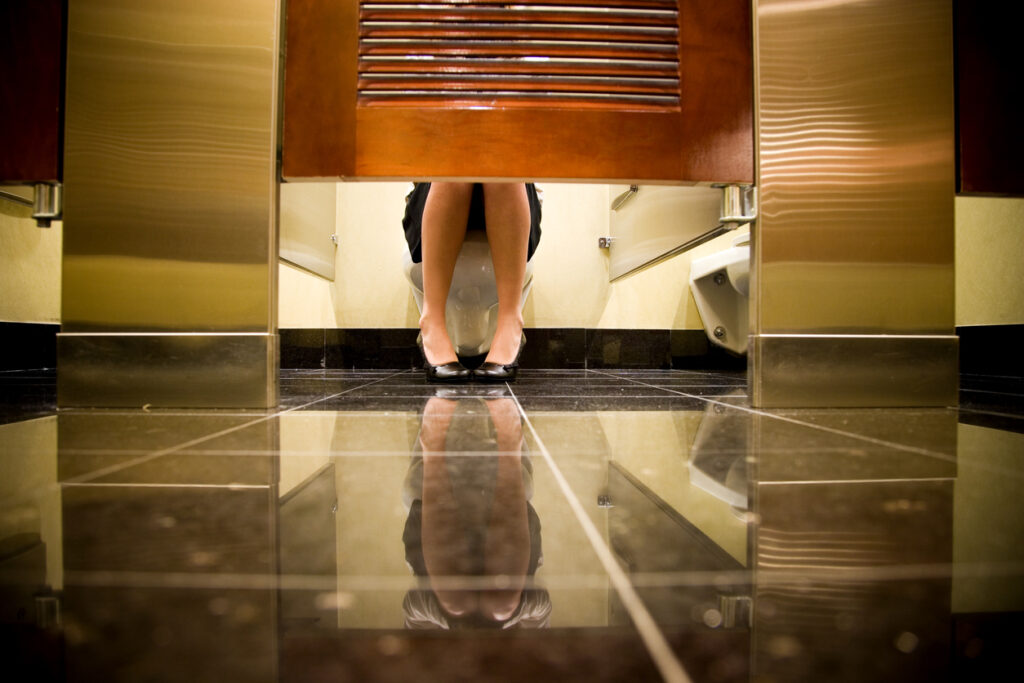I am sitting on a hot train returning to London having just delivered another awareness and training session, with trans*formation (a network and advocacy group for Trans* professionals) reflecting on how it went.
I was overjoyed by the questions from the audience, particularly because I hadn’t been asked about gender-neutral toilets.
Far too often the discussion and debate in such sessions revolves around where people poo and pee. I am a vocal advocate of giving people choice with gender-neutral facilities, but trans and non-binary issues are far more complex and deeper than the toilet debate.
I was very moved by one member of the audience, who came up to me after the event to share the story of his transgendered child. It was apparent how proud he was of his child and that, as a parent, he had also been on a journey. He was so delighted that the organisation in which he worked wanted to do more to build an environment where his child would feel safe and flourish.
What really struck me during the session was the following question: “What is the one thing that we can do to make our organisation more trans inclusive?”
Many considerations crossed my mind:
- Do you have a gender identity and gender expression policy? How inclusive is this policy?
- Do you have active trans allies?
- Are your senior leaders comfortable with talking about trans issues?
- What resources do you make available for your line managers and people?
- What are your facilities? Is there choice?
- Are your benefits trans inclusive, especially your corporate healthcare?
- What have you done on your trans inclusion journey?
- What’s your external corporate voice?
- How many trans and non-binary people do you hire?
- How do you celebrate trans and non-binary people throughout the year?
As you can see, this isn’t just about sticking a gender neutral sign on a toilet door!
Being trans in 2017
While it’s brilliant to see more trans and non-binary people being visible in the workplace, there remain significant challenges for trans and non-binary people in the UK.
Suicide rates, unemployment rates and poverty rates for trans and non-binary people are still higher than the national average. NHS waiting lists remain long and GPs still don’t receive any training on the treatment and care of trans and non-binary people. Furthermore, transphobic hate crime is on the rise.
The UK Government’s response to the groundbreaking Women and Equality Inquiry on Transgender Equality (2016) was, at best, lukewarm – and this is me being polite!
The Equality Act 2010 and Gender Recognition Act 2004, while providing some protection, are both now increasingly looking outdated and reinforcing the binary medicalisation of transition. The small glimmer of hope is that both the Labour and Conservative parties are now talking about changes to the Gender Recognition Act. Hopefully, by the time this article is published, there will be some welcome news.
Far too often, I’ve heard seasoned HR professionals unable to articulate the business case for inclusion and diversity. This needs to change.
Looking over our respective shoulders at the US we see 13 states looking to enact ‘bathroom bills’, where trans and non-binary people have to use the public restrooms of their birth gender leading to trans men using female facilities and vice versa. We also see President Trump removing protection for trans students.
So what does this mean for HR professionals?
I am always amazed about the lack of knowledge in HR on inclusion and diversity. This topic should not only be the remit of the D&I teams as it impacts the whole organisation’s purpose, culture and sustainability.
It is a core part of the HR skill set and, far too often, in my experience, I’ve heard seasoned HR professionals unable to articulate the business case for inclusion and diversity. This needs to change.
When it comes to hiring or promotion decisions, I also hear far too regularly candidates being rejected because of ‘lack of culture fit’. This drives me mad –it’s an excuse for the status quo.
Together we can focus on what really matters. That our people feel included, welcome and safe so that they can be the best they can be.
On a positive note there are an increasing number of HR professionals who champion trans and non-binary inclusion.
Trans and non-binary people rightly push the ingrained, stubborn and unhelpful gender norms in both society and the workplace. The workplace is a very binary place and I always ask myself why this is. In my opinion it’s partly due to historic and legacy reasons, although with millennials viewing gender as a spectrum we will see the challenge to de-genderise the workplace increase.
So what can you do?
HR professionals can do a lot:
- Learn more about trans and non-binary issues
- Champion inclusion and diversity throughout their organisation
- Challenge their leaders’ thinking and actions, systems and processes. Do you really need titles on your application process? Why do you offer only male and female gender on forms and processes? Are your recruiters trained up in trans and non-binary issues?
- Step in when inappropriate language and behaviours are used
- Be a visible and active trans ally
Together we can focus on what really matters. That our people feel included, welcome and safe so that they can be the best they can be without spending energy on which toilet to use.
Additional note
I am a big fan of the genderbread person, a visual tool that explores the difference between biological sex, attraction, gender identity and gender expression. I find it helps explain the beauty of each one of us – we all are somewhere on a spectrum and that makes us unique. To view the tool, visit: http://itspronouncedmetrosexual.com/2015/03/the-genderbread-person-v3/#sthash.QJPXZkDw.DCfLzgJW.dpbs






